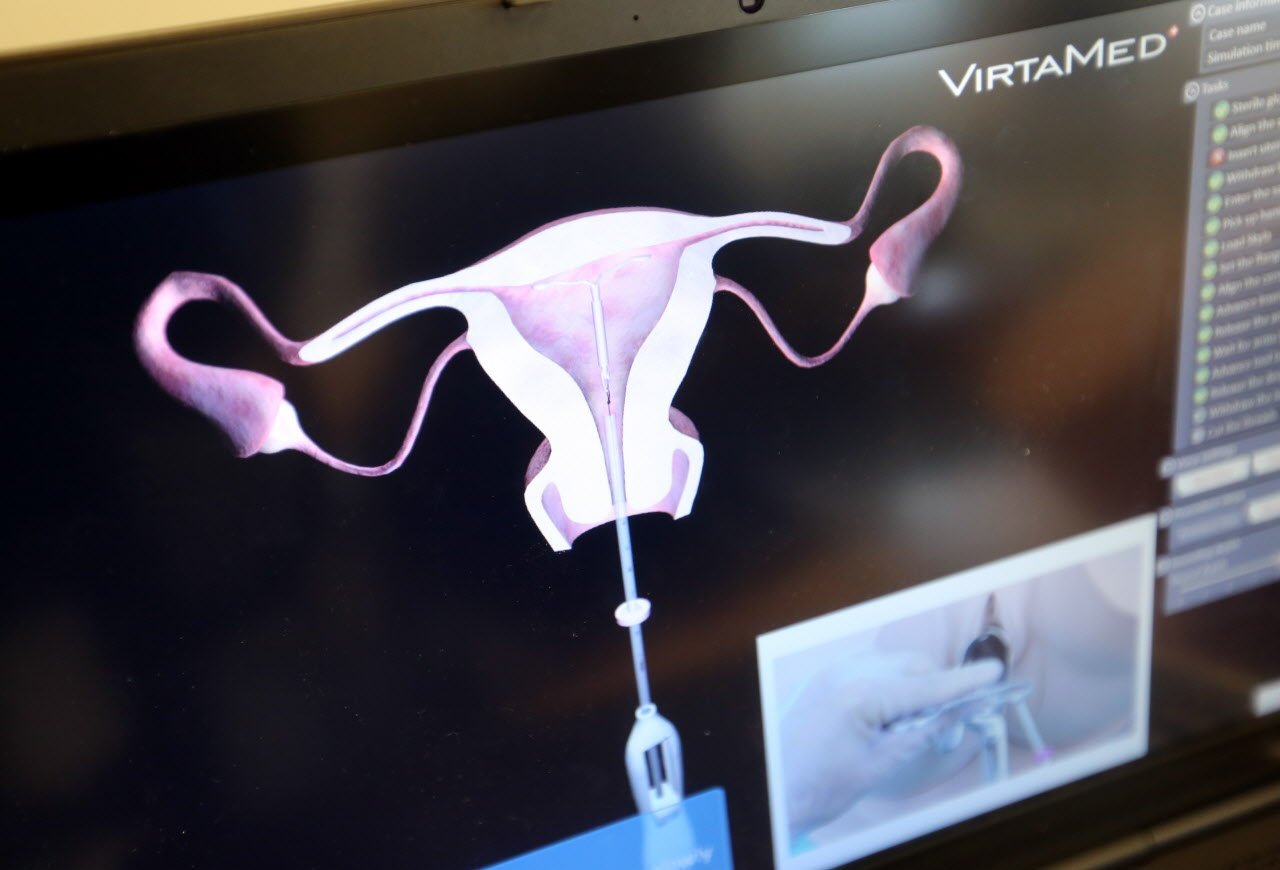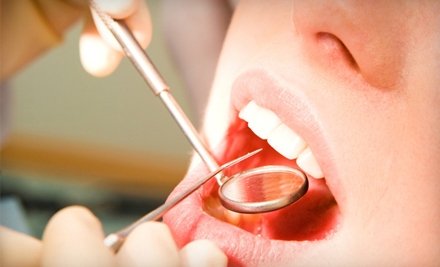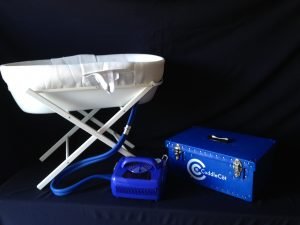5 Things We Learned at the ACNM Midwifery Conference in Savannah!
This week Healthy Mothers, Healthy Babies Coalition of Georgia attended The American College of Nurse-Midwives (ACNM) 63rd Annual Meeting & Exhibition in Savannah, Georgia. This year the conference sought to embrace the previously unacknowledged wealth of caring that the grand midwives provided. The goal was to showcase the scientific information leading to evidence-based care and to get to the humanity of “can you see me now?” conversations. The hope was that such conversations will propel attendees to take steps to better see events of bias, racism, and disparity. Below we've listed (5) things that we learned during our time in Savannah at the ACNM meeting. Enjoy!
 1- Giving Voice to the Soul of Midwifery
1- Giving Voice to the Soul of Midwifery
This years conference theme celebrates the grand midwives of the South, women who were healers and care providers trained in their communities, who attended legions of pregnant women. Grand midwives were central, honored figures who rose from a legacy of slavery and who were critical to women’s health care during segregation. They passed down not only their knowledge, but also important cultural traditions and values.The theme’s logo, set in Georgia peach hues, pays tribute to three of these grand midwives (clockwise from left in the logo image right). Onnie Lee Logan, Mary Coley, and Margaret Charles Smith. Onnie Lee Logan of southern Alabama, the daughter and granddaughter of midwives, gained such renown as a midwife that she was permitted to continue practicing after Alabama outlawed lay midwifery in the ’70s. Mary Coley of Baker County, Georgia, subject of the 1952 documentary All My Babies, trained under Onnie Lee Logan and became not only a highly accomplished midwife, but also a strong advocate for the health of all African American women in her state. Margaret Charles Smith of Green County, Alabama, found her calling at age five when she caught her first baby because the attending midwife arrived late. Her life is featured in the 2008 documentary Miss Margaret: The Story of an Alabama Granny Midwife and in the memoir, Listen to Me Good: The Life Story of an Alabama Midwife.
2- Immediate Postpartum LARCs Are Covered by Medicaid in Georgia!
ACOG recommends that OBs provide counseling on this option to women before they give birth so that right after delivery, they can  place the long-acting, reversible contraception (LARC)- specifically an intrauterine device. This will prevent unintended and short-interval pregnancies, which often lead to prematurity, low birth-weight and maternal complications. We learned from the three companies that produce intrauterine devices (Medicines 360, Bayer and Cooper Surgical) that Georgia CMOs all process payment for these IUDs placed immediately postpartum. Planning for Healthy Babies (P4HB) Waiver also covers this cost if mom enrolls after her six weeks of postpartum Medicaid end if she decides to get one placed after delivery. Georgia has historically had high rates of unintended pregnancies, prematurity and low birth-weight. In 2016, Georgia saw our first increase of immediate postpartum LARC placement. We hope to see more providers and hospitals accommodating this process!You can see our Executive Director insert a Paragard IUD in the simulator at the Conference on our Instagram Account here.
place the long-acting, reversible contraception (LARC)- specifically an intrauterine device. This will prevent unintended and short-interval pregnancies, which often lead to prematurity, low birth-weight and maternal complications. We learned from the three companies that produce intrauterine devices (Medicines 360, Bayer and Cooper Surgical) that Georgia CMOs all process payment for these IUDs placed immediately postpartum. Planning for Healthy Babies (P4HB) Waiver also covers this cost if mom enrolls after her six weeks of postpartum Medicaid end if she decides to get one placed after delivery. Georgia has historically had high rates of unintended pregnancies, prematurity and low birth-weight. In 2016, Georgia saw our first increase of immediate postpartum LARC placement. We hope to see more providers and hospitals accommodating this process!You can see our Executive Director insert a Paragard IUD in the simulator at the Conference on our Instagram Account here.
3- Biotine is Back.
Biotine was originally developed as an alcohol-free mouthwash to soothe irritation and help with dry mouth by the Laclede  Corporation. It was purchased by GSK and the enzymes were removed from the formula. Some like it, some don't. For those who really preferred the original formula of Biotine, Laclede has just launched Salivea which is essentially the original formula of Biotine (including the enzymes, calcium and zinc gluconate but without the parabens).In several studies, periodontal (“gum”) disease has been associated with preterm births. Periodontal disease can be detected in up to 30 percent of pregnant women. Even though studies have shown a strong correlation between periodontal disease and preterm deliveries, a few recent studies involving the actual dental treatment of periodontal disease during pregnancy have failed to statistically improve those birth outcomes. However, a study using alcohol-free mouthwash has yielded impressive results. Of the patients with periodontal disease who used the rinse twice daily, only 5.6% delivered their babies before 35 weeks gestation while 21.9% of the control group with periodontal disease delivered their babies before 35 weeks gestation.
Corporation. It was purchased by GSK and the enzymes were removed from the formula. Some like it, some don't. For those who really preferred the original formula of Biotine, Laclede has just launched Salivea which is essentially the original formula of Biotine (including the enzymes, calcium and zinc gluconate but without the parabens).In several studies, periodontal (“gum”) disease has been associated with preterm births. Periodontal disease can be detected in up to 30 percent of pregnant women. Even though studies have shown a strong correlation between periodontal disease and preterm deliveries, a few recent studies involving the actual dental treatment of periodontal disease during pregnancy have failed to statistically improve those birth outcomes. However, a study using alcohol-free mouthwash has yielded impressive results. Of the patients with periodontal disease who used the rinse twice daily, only 5.6% delivered their babies before 35 weeks gestation while 21.9% of the control group with periodontal disease delivered their babies before 35 weeks gestation.
4- There's a Product for Grieving Parents To Spend Time with their Lost Newborn
Across the UK, hospitals provide a special bassinet with a cooling system called a 'Cuddle Cot'.This is to help ease the loss of a  newborn for families in the hospital and home settings. The cooling system allows families to spend time with the deceased infant before they are transported to the morgue for processing. According to Flexmort, the company that makes them, there are around 600 of these units being used in hospitals across the United States.What do you think? Should hospitals in Georgia provide a similar product to provide time for families to grieve with their recently departed infant?
newborn for families in the hospital and home settings. The cooling system allows families to spend time with the deceased infant before they are transported to the morgue for processing. According to Flexmort, the company that makes them, there are around 600 of these units being used in hospitals across the United States.What do you think? Should hospitals in Georgia provide a similar product to provide time for families to grieve with their recently departed infant?
5- Doulas Are Cost Effective!
According to a recent study, A Two-Delivery Model Utilizing Doula Care: A Cost-Effectiveness Analysis, the presence of a trained  doula during the first delivery resulted in 219,530 fewer cesarean deliveries, 51 fewer maternal deaths, 382 fewer uterine ruptures, and 100 fewer hysterectomies, saving $91 million with 7,227 increased quality-adjusted life years (QALYs) for the first and subsequent delivery. Sensitivity analyses demonstrated cost-effectiveness up to $1,452 per doula. The study concludes that the presence of a trained doula during a woman’s first delivery leads to improved outcomes, decreased costs and increased QALYs during her first and second delivery. This model argues for increased reimbursement for doula care, thereby promoting improved health for patients.
doula during the first delivery resulted in 219,530 fewer cesarean deliveries, 51 fewer maternal deaths, 382 fewer uterine ruptures, and 100 fewer hysterectomies, saving $91 million with 7,227 increased quality-adjusted life years (QALYs) for the first and subsequent delivery. Sensitivity analyses demonstrated cost-effectiveness up to $1,452 per doula. The study concludes that the presence of a trained doula during a woman’s first delivery leads to improved outcomes, decreased costs and increased QALYs during her first and second delivery. This model argues for increased reimbursement for doula care, thereby promoting improved health for patients.
Want More?

Want to learn more about amazing products on the market for maternal and child health? Hear from experts and network with maternal and child health professionals? Join us at the 2018 HMHB Annual Meeting & Conference on October 22-23, 2018. Early bird registration and discounted hotel rooms end August 31, 2018. Click here for more information and registration!
Sources:1-Offenbacher S. et al. Periodontal Infection as a Possible Risk Factor for Preterm Low Birth Weight, J Periodontol 1996; 67: 1103-13 http://www.ncbi.nlm.nih.gov/pubmed/89108292-Jeffcoat M et al. Periodontal Infection and Preterm Birth: Results of a Prospective Study, J Am Dent Assoc 2001; 132:875-80 http://www.ncbi.nlm.nih.gov/pubmed/114806403-Offen-bacher S et al. Maternal Periodontitis and Prematurity. Part I: Obstetric Outcome of Prematurity and Growth Restriction, Ann Periodontol 2001; 6:164-74. http://www.ncbi.nlm.nih.gov/pubmed/118874604-National Institute for Health Care Management, Improving Access to Perinatal Oral Health Care: Strategies & Considerations for Health Plans Issue Brief July 2010. http://www.nihcm.org/pdf/NIHCM-OralHealth-Final.pdf5-See e.g. Fogacci M et al. The Effect of Periodontal Therapy On Preterm Low Birth Weight: A Meta-Analysis. Obstetrics & Gynecology, 2011: 117: 153-65. http://www.ncbi.nlm.nih.gov/pubmed/211736586-Jeffcoat M et al. Use of alcohol-free antimicrobial mouth rinse is associated with decrease incidence of preterm birth in a high-risk population. Am J Obstetrics & Gynecology, 2011 Oct; 205(4):382. http://www.ncbi.nlm.nih.gov/pubmed/220830607-Greiner K et al. A Two-Delivery Model Utilizing Doula Care: A Cost-Effectiveness Analysis. https://journals.lww.com/greenjournal/Abstract/2018/05001/A_Two_Delivery_Model_Utilizing_Doula_Care___A.125.aspxDISCLAIMER: This blog post is not an ad, just an outline of some cool things we learned at the ACNM Conference. HMHB did not receive any compensation for this blog post or related stories from any company.
